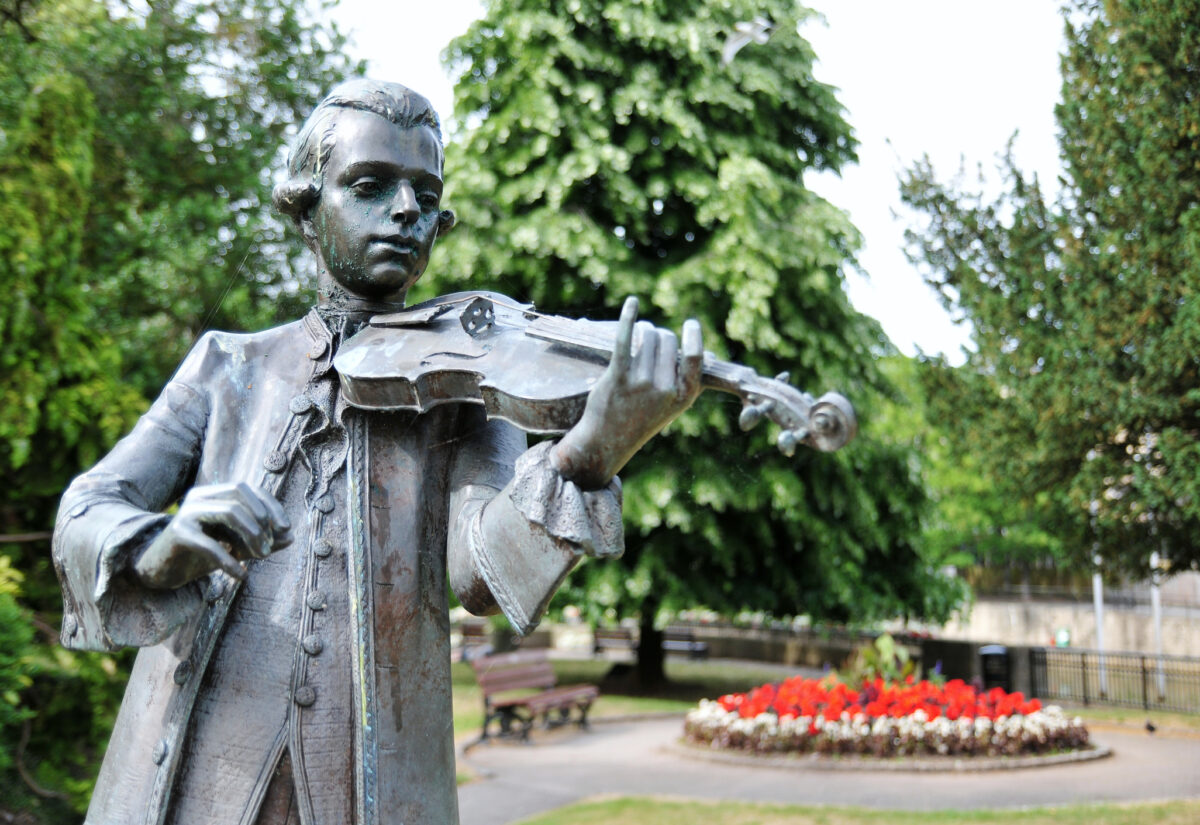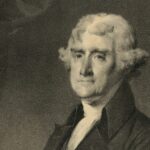 Getty Images
Getty ImagesThroughout history, certain children have defied expectations and reshaped the world long before they reached adulthood. These young minds didn’t wait for permission to grow up before making their mark—they composed symphonies, founded empires, pioneered scientific theories, stood up to oppression, and forever changed the course of history. Often thrust into the spotlight, sometimes reluctantly, their stories are as diverse as they are inspiring. From ancient dynasties to Enlightenment salons, from early empires to modern laboratories, here are some of the most remarkable child prodigies throughout history who used their talent, determination, and intellect to leave a lasting legacy that continues to influence us today.
Blaise Pascal (1623–1662)
By the age of 12, Blaise Pascal was already independently studying Euclidean geometry and discovering original proofs, including recreating 32 of Euclid’s propositions using only a ruler and compass. At 16, he published his first major work on projective geometry, which earned him instant recognition in academic circles across Europe. By the time he was 19, Pascal had invented the Pascaline, one of the earliest mechanical calculators—an extraordinary accomplishment during a time when most calculations were done manually.
His early contributions to the fields of pressure, fluid dynamics, and probability theory (alongside Fermat) helped lay the groundwork for modern physics and mathematics. Later in life, Pascal turned his attention to philosophy and theology, where his Pensées became one of the foundational texts of Christian apologetics. But it was his mind as a teenager that ignited these ideas and launched a career that spanned disciplines.
Wolfgang Amadeus Mozart (1756–1791)
Mozart began composing short pieces at the age of five, showing uncanny mastery of harmony and melody. A child of Salzburg, he was paraded through the courts of Europe by his father, performing for emperors and kings, who marvelled at his ability to improvise fugues, play complex concertos from memory, and transcribe music after a single hearing.
By the age of eight, he had composed his first symphony; by twelve, his first opera. His early brilliance laid the foundation for one of the most productive musical careers in history. Even today, his compositions are studied and performed around the world, and his early years remain a case study in prodigious talent nurtured under intense public scrutiny.
Akrit Jaswal (b. 1993)
Born in India, Akrit Jaswal stunned the medical world at just seven years old when he performed surgery to separate the fused fingers of a local girl. Although he was not formally trained, his understanding of anatomy and surgical technique was astonishing. By age 10, he was conducting medical research and giving lectures on advanced topics.
Nicknamed “the world’s smartest boy” in some media circles, Akrit’s estimated IQ has placed him among the most intelligent people in modern times. He expressed a desire from an early age to cure cancer, and while his academic work continues, his legacy as a symbol of self-taught brilliance is already firmly established.
Jean-François Champollion (1790–1832)
By 11, Champollion had already learned several classical and ancient languages, including Greek, Latin, Hebrew, Syriac, Coptic, and Arabic. At 16, he presented a paper on the Coptic language to the Grenoble Academy. His deep understanding of ancient languages allowed him to later decipher Egyptian hieroglyphics through the Rosetta Stone.
While it was in his thirties that he announced his discovery, the intellectual foundation had been built decades earlier, when most children were learning grammar. Champollion’s work opened the door to the modern study of ancient Egypt and laid the groundwork for future archaeological breakthroughs.
Pablo Picasso (1881–1973)
Picasso’s father was an art teacher who quickly recognised his son’s talents. By the time Picasso was nine, he had completed Le Picador, his first fully realised painting. At 14, he gained admission to Madrid’s Royal Academy of San Fernando, where he was far younger than his classmates.
His early work showcased technical brilliance, but Picasso soon moved beyond realism, co-founding the Cubist movement by his mid-twenties. His childhood mastery of classical techniques gave him the freedom to dismantle and reconstruct art as the modern world knew it. His career, shaped by the confidence and clarity of his early talents, would span seven decades.
Malala Yousafzai (b. 1997)
By the time she was 11, Malala Yousafzai was blogging anonymously for the BBC under the pen name Gul Makai, describing the repression of girls’ education in Taliban-controlled Pakistan. Her words, clear and brave, brought international attention to the plight of girls in her region.
After surviving a gunshot to the head in 2012, she became a global figure for peace and education rights. At 17, she won the Nobel Peace Prize—the youngest recipient ever. Her childhood courage not only sparked global conversation but also led to tangible change in education policy and funding around the world.
Carl Friedrich Gauss (1777–1855)
Born to working-class parents, Gauss demonstrated an almost supernatural affinity for numbers from the moment he could speak. At three, he corrected his father’s arithmetic. At seven, he reportedly found a formula for summing an arithmetic series while his classmates were still counting manually.
By 21, he published Disquisitiones Arithmeticae, revolutionising number theory. But even earlier, his insights into complex numbers and prime distributions were turning heads. He contributed to astronomy, developed the Gaussian distribution in statistics, and worked on early versions of what would become non-Euclidean geometry—all seeded by insights developed in his youth.
Tutankhamun (c. 1341–1323 BCE)
Ascending the throne around the age of nine, Tutankhamun ruled during the 18th Dynasty in ancient Egypt. Though he is often portrayed as a puppet ruler guided by powerful advisors like Ay and Horemheb, his reign marked a return to traditional polytheistic worship after the radical monotheism of Akhenaten. Even ceremonial decisions made under his name helped reset a civilisation’s religious course.
While Tutankhamun’s rule was brief—he died around 18—his richly furnished tomb, discovered untouched in 1922, reignited global interest in ancient Egypt. The sheer volume of artefacts and inscriptions preserved in his burial site makes him one of the most studied ancient rulers today.
Mary Shelley (1797–1851)
Mary Shelley began writing Frankenstein when she was just 18, but her intellectual background was in place long before that. Raised by Mary Wollstonecraft and William Godwin, two of the most radical thinkers of their day, Shelley was exposed to philosophy, politics, and literature from birth.
Frankenstein, written during a stormy summer with Percy Bysshe Shelley and Lord Byron, wasn’t just a novel—it was the birth of modern science fiction. Shelley’s early genius allowed her to interrogate the responsibilities of scientific advancement, and her work remains more relevant than ever in an age of artificial intelligence and genetic engineering.
Alia Sabur (b. 1989)
Alia Sabur’s journey began with reading at two and taking college-level courses by eight. By 10, she was enrolled at Stony Brook University in New York. At 14, she received her master’s degree, and by 18, she became the world’s youngest professor, teaching in South Korea.
Her fields—applied physics and nanotechnology—are at the cutting edge of modern science. Yet her story is just as much about challenging assumptions as it is about intellect. Sabur has become a voice for girls in STEM and proof that academic brilliance is not limited by age.
Claudius Ptolemy (c. 100–170 CE)
Although Ptolemy’s major works came later in life, his youth likely involved intensive education in Alexandria, one of the most vibrant intellectual centres of the ancient world. With early exposure to mathematics, astronomy, and cartography, Ptolemy synthesised centuries of learning into the Almagest, which dominated astronomical thought for over 1,400 years.
His Geography codified mapmaking and influenced exploration centuries after his death. While little is known about his early years, the mastery in his work suggests a prodigious student who absorbed complex ideas at a young age.
Enheduanna (c. 2285–2250 BCE)
The daughter of Sargon of Akkad, Enheduanna was appointed high priestess of the moon god Nanna in Ur at a young age—likely in her teens. Her role was both political and spiritual, cementing her father’s rule over newly conquered Sumerian cities.
She composed hymns that merged theology with royal propaganda, including the Exaltation of Inanna, a poetic and personal work that marked a departure from anonymous religious texts. Her decision to sign her name to her works made her the first known author in history. Her writing influenced Mesopotamian religion for centuries and gave voice to women in a deeply patriarchal society.



